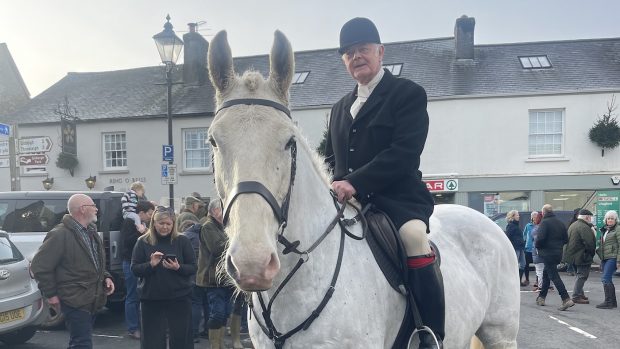A safety feature, already widely used in cycling and skiing helmets and designed to reduce brain injuries, could be set to revolutionise riding helmet design. That is the prediction from Charles Owen’s chief executive Roy Burek, after the company’s MS1 pro jockey skull, whose features contain the Multi-Directional Impact Protection System (MIPS), won a safety award at the recent equestrian industry trade show BETA International.
MIPS is designed to add protection against the rotational motion transmitted to the brain from angled impacts to the head, which increase the risk for minor and severe brain injuries. A quick, sudden stop such as that caused by a rider falling off a horse at speed will cause the brain to move or stretch; this happens mainly due to the brain’s suspension in the cerebrospinal fluid.
“MIPS is a low friction slip layer that mimics the action of the scalp and how it works to protect the brain against rotational motion,” explains Mr Burek. “The human scalp was designed to be effective at speeds as fast as humans can run, but now we have the ability to go much faster – on a bike, or riding a horse, for example – the scalp runs out of movement and our heads need a ‘top-up’ protection.”
The development of MIPS began in 1995 when Swedish neurosurgeon Hans von Holst questioned why patients were coming in with brain injuries despite having been wearing helmets.
“These helmets did not always show dramatic marks or damage, and yet the patients still had serious brain injuries. The surgeon began looking at standards and construction for helmets, and realised testing was based on straight line impact,” says MIPS chief executive Johan Thiel.
When new methods were developed to look at how angle, speed and sudden stop caused impact to the brain, the idea for a low friction layer which mimicked the action of the scalp came into being. While the technology has been used for equestrian helmets since 2008/09, the biggest markets for MIPS are currently cycling and skiing.
“We believe it is beginning to gain traction now in the equestrian market, however,” says Mr Thiel, who believes the European CE standard will change to integrate this type of technology in the future for all riding helmets. “Horse riders have an awareness they will fall off, but it takes time to educate people about the best equipment for protecting themselves.”
Mr Burek, who sits on the equestrian committee for European CE standard, agrees and says the committee would like to be early adopters of a test method that can reliably assess helmets using this technology.
“Having a test that is relatively cheap, reliable and reproducible is the challenge. Work is underway to produce a test head that recreates the spinning and turning effect of an angled impact fall,” he says.
The new Charles Owen helmets featuring the technology include the MS1 pro jockey skull and two My PS helmets.
Finest Brands International’s Champion Revolution MIPS deluxe hat took highly commended in the safety category at BETA International.
“After 10 years of research, Champion is delighted to announce the introduction of riding headwear with MIPS technology, which is designed to provide a small amount of movement within the helmet during impact. Adding rotational injury protection is an obvious step forward to ensure Champion continue to offer the most advanced protection,” says managing director Sarah-Jane Fedarb.
Article continues below…
You might also be interested in:

Is your hat up to standard? Check out the latest riding hat rules for competition

Subscribe to Horse & Hound this spring for great savings
The MIPS low friction layer, which is designed to give 10-15mm of movement, adds around 25-45g in weight and around £20-40 to the cost of the helmet.
“Of course we need real world feedback before we start saying that this is for everyone, but that is the case for any product in the equestrian market which is hailed as the next wonder technology that will revolutionise safety,” says Mr Burek, who is aiming to launch the new MIPS hats at this year’s Badminton.
“There will be those who embrace it straight away, those who think it’s not needed and those who will buy it so long as the helmet looks good – but we are confident once we have the proof this makes a real difference to brain injury rates, customers will start demanding this extra feature on helmets.”
For all the latest news analysis, competition reports, interviews, features and much more, don’t miss Horse & Hound magazine, on sale every Thursday.




